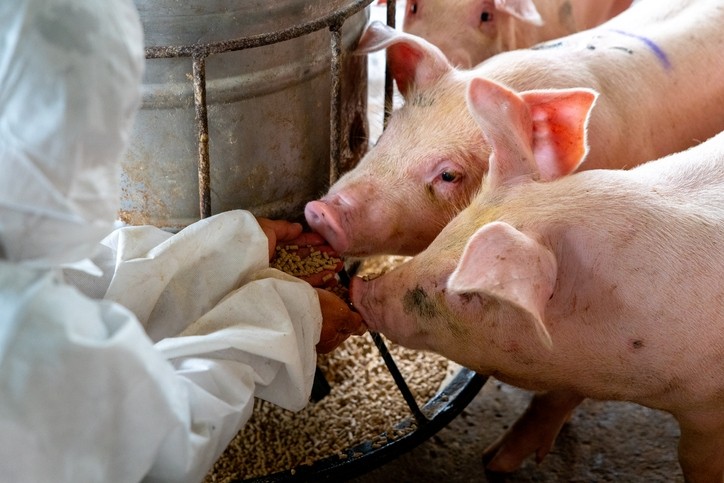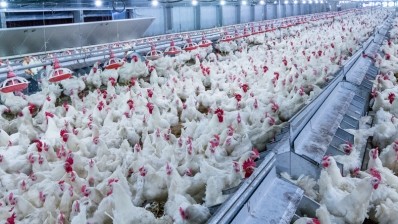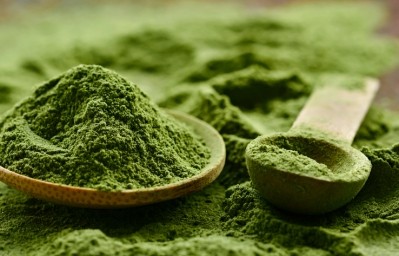Excess leucine reduces swine feed intake, performance

An international group of researchers from the University of Illinois, Free University of Berlin and Ajinomoto Animal Nutrition explored the implications for swine development and metabolism with increased dietary leucine.
The group’s study was published in the Journal of Animal Science.
A change in how some distiller’s dried grains with solubles (DDGS) are generated increases the protein concentration and can raise the amount of the amino acid leucine by up to 200%, said Hans Stein, corresponding author and professor in the department of animal sciences with the University of Illinois.
“That is not a good thing because excess leucine may have negative effects on the utilization of some other AA including Valine, Isoleucine, and tryptophan,” he told FeedNavigator. “So the reason we researched the effects of leucine is that by using high protein DDGS you get a lot of excess leucine – and we hypothesized that might negatively impact performance.”
The researchers found that pigs ate less and gained less weight, linearly, as more leucine was added to the diet. The excess dietary leucine reduced growth performance and nitrogen retention.
The changes in production following the increase in dietary leucine mean that producers need to evaluate their use of high-protein DDGS and potentially increase dietary amounts of other amino acids, said Stein.
“They should look at the diet formulation sheets and maybe limit inclusion of high protein DDGS to a level that makes sure that leucine does not exceed 150% of the requirement – at that level there likely will not be any negative effects,” he said. “However, if high protein DDGS is inexpensive and producers want to include more and thereby create diets in which leucine is closer to 200% of the requirement then they can negate the negative effects of excess leucine by adding extra isoleucine, valine, and tryptophan.”
Why track leucine levels in swine feed?
The interest in tracking the influence of increasing leucine levels followed changes in how DDGS are generated, said Stein.
“The increased Leu is only observed in what we call High-Protein DDGS,” he said. “This is a product that is produced by a few ethanol plants that are doing additional fractionation of the DDGS – they are primarily taking the fiber out and therefore they end up with a greater protein concentration – so because protein goes up (to 40 to 50%) – the concentration of Leu also goes up.”
The technology is used by a minority of ethanol production plants in the US, he added. “So, unlike the low oil technology that is widely used, this is a much smaller share of the total production of DDGS.”
The production process increases the levels of several amino acids (AA), not just leucine, he said. However, that is typically positive for the ingredient.
“Leucine is unique because the concentration gets really high,” he said. “Diets formulated with high protein DDGS may, therefore, contain almost 200% of the requirement for this AA.”
Feeding trial highlights
In the feeding trial, 40 pigs received one of five diets for a 15-day period, the researchers said. The first seven days of the period were for adaptation to the diet.
The diets included corn, soybean meal, wheat and barley and included 100%, 150%, 200%, 250% or 300% of the requirement for standardized ileal digestible leucine, they said.
Pigs were weighed at the start and end of the feeding trial, daily feed intake was recorded, and urine and fecal samples were collected starting on day 8 of the test, they said. At the end of the trial, tissue and blood samples were gathered for analysis.
“Plasma urea nitrogen (PUN), plasma and hypothalamic serotonin, tissue BCAA, serum and tissue branched-chain α-keto acids, and messenger ribonucleic acid abundance of genes involved in BCAA metabolism” were checked following the feeding period, they said.
Results
Overall, acid detergent fiber, average daily feed intake and the gain to feed ratio declined linearly as more leucine was included in the diet, the researchers said.
There also tended to be a reduction in nitrogen (N) retention and a drop in the biological value of dietary protein, they said. PUN increased as more leucine was present and there was a quadratic fall in plasma serotonin along with a linear drop in hypothalamic serotonin.
However, levels of BCAA increased in the liver and declined in skeletal muscle, they said. Both the expression of mitochondrial BCAA transaminase and E1α subunit of branched-chain α-keto acid dehydrogenase grew in skeletal muscle as more leucine was added to the feed.
The amount of α-ketoisovalerate fell in the liver, serum, and skeletal muscle, while α-keto-β-methylvalerate was lowered in skeletal muscle and serum, and α-keto isocaproate increased in the liver, skeletal muscle and serum, they said.
“In conclusion, excess dietary Leu [leucine] impaired growth performance and nitrogen retention, which is likely a result of increased catabolism of Ile [isoleucine] and Val [valine], which in turn reduces availability of these amino acids resulting in reduced protein retention, and excess dietary Leu also reduced hypothalamic serotonin synthesis,” the researchers said.
Source: Journal of Animal Science
DOI: doi.org/10.1093/jas/skz259
Title: Excess dietary leucine in diets for growing pigs reduces growth performance, biological value of protein, protein retention, and serotonin synthesis
Authors: W.B. Kwon, K.J. Touchette, A. Simongiovanni, K. Syriopoulos, A. Wessels, H.H. Stein













